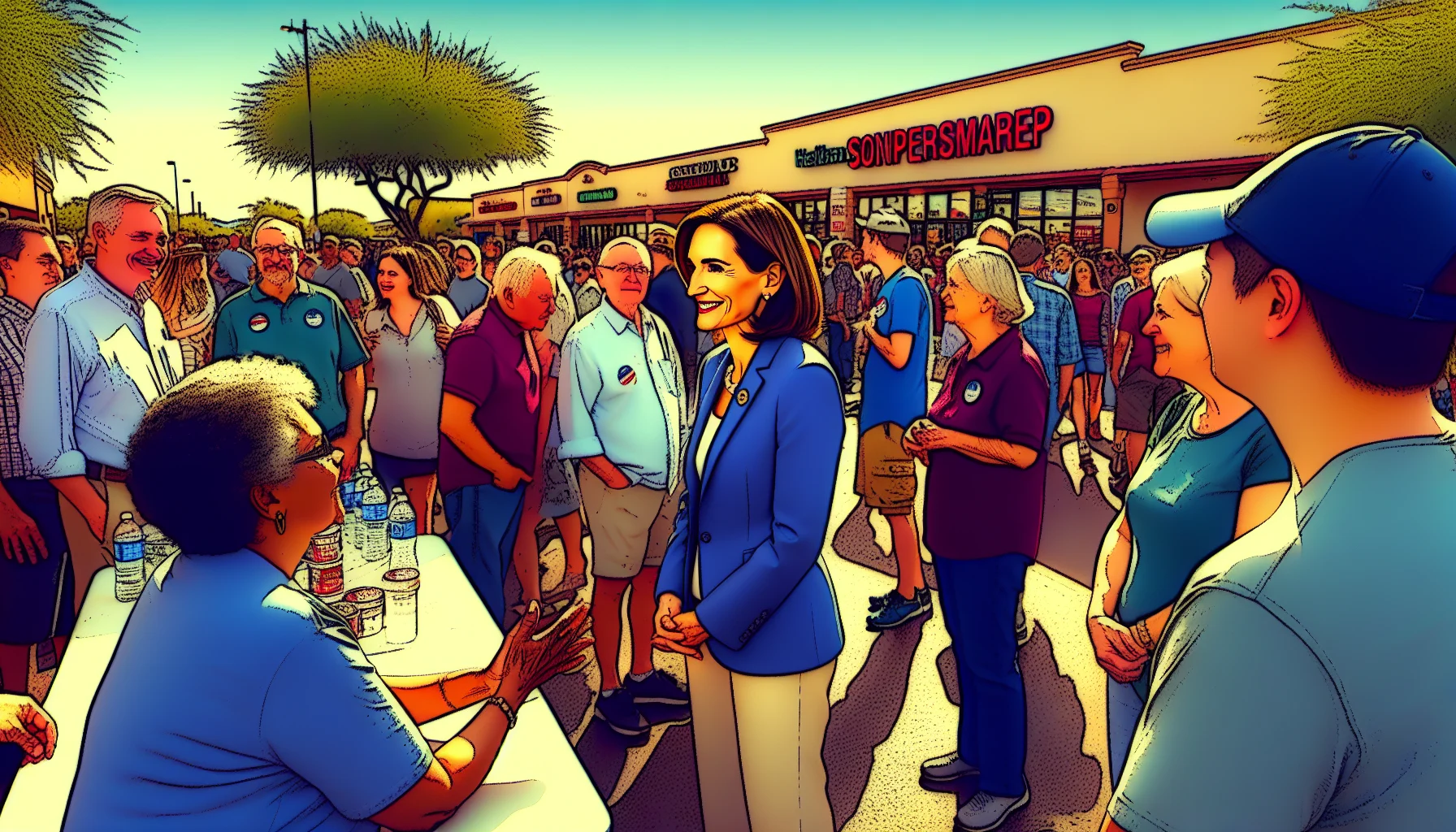
The 2011 Tucson Shooting
by: The Calamity Calendar Team
January 8, 2011
A Tragic Morning in Casas Adobes
January 8, 2011, was meant to be a day of democratic engagement and dialogue. The sun rose over Casas Adobes, a quiet community near Tucson, Arizona, heralding a crisp winter day suited perfectly for outdoor gathering. United States Representative Gabrielle Giffords had scheduled one of her "Congress on Your Corner" events outside a local Safeway supermarket. This initiative aimed to bring her closer to the constituents she represented, offering them a chance to voice concerns and seek solutions directly with their elected official.
Giffords, known for her passionate stance on issues such as healthcare and border security, often attracted large crowds. That day, citizens gathered with the expectation of civil discourse and community participation. What they could not anticipate was a looming shadow, cast not by the threat of a storm, but by a man named Jared Lee Loughner, whose intentions could not have been darker.
The Clouds of Mental Illness
In the lead-up to this tragic event, Loughner’s conduct had raised alarms on multiple fronts. Friends, family, and associates noted a decline in his mental stability. Suspended from Pima Community College due to erratic behavior, Loughner had also encountered law enforcement on several occasions. Despite these warning signs, assessment and intervention were limited, a distressing reminder of the challenges inherent in the mental health system. The cracks through which Loughner fell were not unique, but they were wide enough to allow his quiet descent into violence.
The Shooting Unfolds
At precisely 10:10 AM, Giffords' event commenced as scheduled. The scene was as serene as a public gathering could be, neighborhood chatter mingling with the aroma of fresh bakery goods. Within moments, however, the tranquility shattered. Loughner emerged from the crowd wielding a Glock 19 pistol, immediately unleashing a hail of bullets.
Panic erupted like a thunderclap. Among those first struck was Rep. Giffords, who collapsed as a bullet tore through her brain. In the chaotic seconds that followed, fear rippled through the throng. Loughner fired indiscriminately, his actions cruel and coldly calculated. In total, he discharged 31 rounds.
Heroes Amidst Chaos
Loughner's actions were as blinding as they were brutal, yet within the chaos, heroes emerged. As Loughner paused to reload, he was tackled to the ground by brave bystanders. Their swift and courageous response prevented further bloodshed. What might have been a grimmer statistic of loss became instead a testament to human bravery, even when faced with abject terror.
Thanks for subscribing!
The aftermath of those fateful minutes left six dead. Federal Judge John Roll, who'd merely stopped by to express personal appreciation to Giffords, perished among them. Christina-Taylor Green, a bright-eyed nine-year-old drawn by her budding interest in government, would not live to pursue her dreams. Thirteen others were injured, their lives irreparably altered by the events of that morning.
A Nation Reacts
In the days following the attack, the United States stood still, gripped by shock and mourning. President Barack Obama addressed the nation, recognizing the victims and extending condolences to those affected. Questions rushed to the forefront of public consciousness. How had this happened, and what measures could prevent future atrocities?
Reverberations from the shooting resonated through the corridors of political power. In particular, it reignited fierce debate over gun legislation and mental health. Discussions around restricting high-capacity magazines and implementing thorough background checks for gun buyers became paramount. The dialogue was not merely about weapons, but also the treatment and recognition of mental illness—often stigmatized and woefully underfunded.
The Struggle to Recover
Giffords' journey to reclaim her life became emblematic of resilience in the wake of violence. After emergency surgery, she embarked on a grueling regimen of rehabilitation, defying the initial prognosis with a determination that inspired many. The nation's focus shifted to the challenges of recovery from traumatic brain injuries, highlighting both the successes and limitations of medical science.
The assault had far-reaching implications beyond the direct tragedies of that day. It spurred changes in how political figures engaged with the public, leading to more stringent security measures at public events. While accessibility and openness are hallmarks of democracy, the line between freedom and security was reevaluated in the light of new fears.
Justice and the Long Shadow
In 2012, Jared Lee Loughner stood before the justice system. Diagnosed with paranoid schizophrenia, his mental state offered a chilling explanation for his actions, though not absolution. Loughner pled guilty to 19 charges, avoiding the death penalty but receiving a life sentence without the possibility of parole—a decision marking closure yet not healing for the grief that lingered.
Giffords, embodying her own brand of strength, became an outspoken advocate for gun reform. Alongside her husband, astronaut Mark Kelly, she established an organization dedicated to curbing gun violence. Their efforts have continued to influence the complex landscape of gun legislation and advocacy for mental health awareness in America.
Reflecting on the Ripples
The 2011 Tucson Shooting remains a landmark in the annals of tragic American history. Although time may dull the immediate painful echo, the conversation it catalyzed persists. As the nation continues to grapple with the balance of rights and responsibilities, the events of that January day serve as a harrowing reminder of both humanity's potential for violence and its capacity for hope. In remembering those we lost, there lies the impetus to strive for a safer, more compassionate society, worthy of the dreams of Christina-Taylor Green and the resilience of Gabrielle Giffords.
Stay in the Loop!
Become a Calamity Insider and get exclusive Calamity Calendar updates delivered straight to your inbox.
Thanks! You're now subscribed.